Water culture technology of various flowers at home
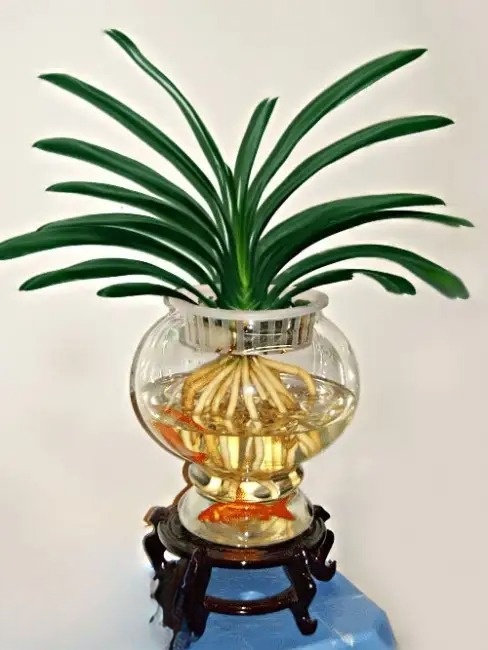
Clivia
The method of hydroponics is as follows:
Container selection
To hydroponically cultivate Clivia, you must first choose a good container. Generally speaking, a transparent glass container is better. If you want to grow a seedling, you only need a glass canning jar. If you want to hydroponically cultivate a large number of plants, you can use fine iron wire to weave a metal mesh with a hole diameter of one centimeter, and then make a glass hydroponic box slightly smaller than the metal mesh; or you can use a goldfish tank instead. Then cover the metal mesh on the hydroponic box, and insert the Clivia seedlings into the nutrient solution through the mesh. The depth of the flower roots in the culture solution should not exceed the pseudobulb at the root.
Nutrient solution preparation
There are two types of nutrient solutions: inorganic and organic. Inorganic nutrient solution can be prepared in the following proportions: 1.5 grams of calcium, 0.01 grams of ferrous sulfate, grams of urea, 1 gram of potassium dihydrogen phosphate, and 0.5 grams of magnesium sulfate. After the above 5 inorganic salts are prepared, they can be dissolved in 1000 grams of water for use. Organic nutrient solution is prepared as follows: 100 grams of fried sesame seed flour, 100 grams of bone meal (made from salt-free fresh bones), 150 grams of bean cake powder, and 50 grams of cooked sesame powder, and then dissolved in 1000 grams of water. Compared with the above two nutrient solutions, organic fertilizer ingredients are rich, but the nutritional content is not high, and inorganic fertilizer ingredients are relatively simple, but the fertilizer effect is large and the effect is fast. In order to complement each other, the two can be used in combination. If used alone, inorganic fertilizer is applied once a week and organic fertilizer is applied once every 5 days.
Water use
When hydroponically cultivating Clivia, you cannot use tap water directly. You must use "trapped" water. The so-called "trapped" water means putting tap water in a container and drying it in the sun for 3-5 days to precipitate chlorides such as bleaching powder that are harmful to the roots of Clivia. From the appearance of "trapped" water, the sediment changes from strips to clumps, and the water color is preferably green. After "trapping" the water, the root position must not be submerged but the pseudobulb. If the water level is too shallow, the Clivia cannot get sufficient water supply, and if the water level is too deep (submerging the pseudobulb), it will cause root rot. During the breeding process, pay attention to observe the changes in water quality. If the roots are found to be yellow or black, it means that there is a lack of oxygen and fertilizer in the water, and the water must be changed immediately.
Air, sunlight, temperature
Whether the ventilation of the roots of hydroponic orchids can be handled well is the key to the success of hydroponic cultivation. After a period of cultivation, a layer of moss will grow on the roots of hydroponic orchids. When the moss is too thick, it will seriously affect the breathing of the roots and corrode the culture solution. At this time, you need to use a soft and clean brush to gently brush off the moss layer (you don’t have to brush it very clean, because a small amount of moss on the roots will not have much impact). In addition, you should always check whether there is enough oxygen in the water. The method of inspection is: put two or three small fish into the hydroponic box. If the small fish swim freely in the water, it means that there is no lack of oxygen in the water. If the small fish always floats to the surface of the water, and its mouth and gills are exposed to the water to breathe, it means that there is a lack of oxygen in the water. After finding that there is a lack of oxygen in the water, oxygen must be supplemented. There are two ways: one is to change the water, and the other is to use a small oxygen pump to supply oxygen to the water. In terms of sunlight treatment, Clivia is a semi-shady plant. Pay attention to light, especially in summer, avoid direct strong sunlight and let it receive scattered light. In addition, according to the phototropism of Clivia leaves, it is necessary to ensure that the leaves receive light evenly, otherwise the length of the leaves will be different and the growth direction will be staggered. Generally, the light angle should be adjusted every two or three days. In terms of temperature treatment, the environmental temperature of mature Clivia should be 11℃-25℃, and the temperature of seedlings can be slightly higher, 20℃-35℃. When growing orchids in water, the temperature difference between day and night should be controlled. In winter, it is better to keep it around 20℃ during the day and not lower than 15℃ at night.

Rose
After the roses fade, cut off the remaining flowers and let the branches grow for several days. When the first axillary buds on the branches grow stronger and accumulate nutrients, cut three-node cuttings, remove the petioles at the bottom, and use a sharp blade to cut the bottom buds into an inclined surface. Immediately insert the cuttings into a prepared bottle filled with clean water. The cuttings can be inserted into the water 1/3. To reduce the evaporation of water from the leaves, some leaves can be cut off. In the case of light protection, new roots are easy to grow from the incision, so brown bottles should be used. If brown is not available, a layer of black plastic film can be wrapped around the bottle. The cuttings should be placed on a south-facing windowsill and not exposed to direct sunlight.
When the temperature is high, you can change the water once a week. When the temperature is 15-25℃, it only takes about 20 days for the roots to grow. When the young roots grow to 1-2 cm long, they can be transplanted into pots. Because the young roots grow in water, in order to adapt to the environment, water them once a day at the beginning of transplanting, and then gradually reduce the amount. After shading for a week, it can be exposed to sunlight in the morning and evening, and it will survive.
The advantages of water-insertion are: simple method, high survival rate, no time limit, and can be cut and inserted after the flowers fade...
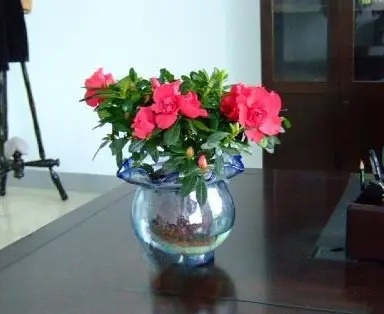
Azalea
The characteristic of soilless cultivation is to replace soil with artificial substrate. Hunan Forestry Institute uses solid substrate to cultivate azalea without soil and obtains very satisfactory results. The variety is summer azalea. The crown structure of soilless cultivation is compact, the amount of flowers is large, the flower diameter is large, and there are few diseases and insect pests. It not only improves the quality of flowers, but also greatly reduces the heavy physical labor. It is a cultivation method worthy of promotion.
1. Preparation of Matrix
The roots of azalea are very delicate, so a loose substrate is required to facilitate ventilation and drainage. Use 1 part of vermiculite, 1 part of pearl sand, 1 part of river sand, and 1 part of coal slag to mix in proportion. After mixing, sterilize the substrate with 0.1% carbendazim solution, mix it evenly into the substrate, and cover it with plastic film for 1 day. Then rinse it with clean water several times, dry it, mix it with 0.4% agricultural compound fertilizer solution, cover it with plastic film for one month, and then it can be potted for use.
2. Preparation of nutrient solution
Rhododendron has strict requirements on fertilizer. During the growth period, thin fertilizer should be applied frequently. According to experiments, agricultural compound fertilizer is mainly used, supplemented with trace elements, the pH value is controlled at about 5, and low-concentration foliar fertilizer is sprayed, which can achieve good results.
Preparation of macroelements: Add 2 grams of agricultural compound fertilizer and 0.5 grams of magnesium sulfate to 1 liter of water to form a standard solution.
Preparation of trace elements: add 20g disodium ethylenediaminetetraacetic acid, 15g ferrous sulfate, 4g manganese sulfate, 6g boric acid, 0.2g zinc sulfate, 0.1g copper sulfate, and 0.2g ammonium molybdate to 1 liter of water as the mother solution. When using, add 1ml of trace element mother solution to 1 liter of standard solution to obtain the full amount of elements. Preparation of foliar fertilizer: add 1g urea, 1g potassium dihydrogen phosphate, 0.02g boric acid, and 0.1g V.B1 to 1 liter of water.
3. Water and fertilizer management
Since the substrate has good drainage and air permeability, but poor water retention, the amount of watering is generally more than soil culture, just to keep the substrate moist; at this time, the buds and leaf buds are germinating, and the fertilizer requirement is relatively large. Water the plant with a full amount of nutrient solution about once every 10 days. From March until the buds burst, spray foliar fertilizer about 15 days. After flowering, the water requirement is large. In addition to watering every day, the leaves should be sprayed in the evening. At this time, the fertilizer requirement is also large. It can be changed to watering the nutrient solution once a week and spraying foliar fertilizer once to promote the growth of new branches and facilitate the differentiation of flower buds. After entering the dog days, pay attention to keeping the substrate moist and spray water on the leaves. The amount of fertilizer can be reduced to watering the nutrient solution about once every 20 days. After the cool autumn, the amount of fertilizer can be gradually increased. Apply a full amount of nutrient solution about half a month, and spray foliar fertilizer 1-2 times to promote the healthy growth of flower buds. After winter, the physiological activity of azalea is weak, and it is not suitable to fertilize. It can be watered appropriately depending on the dryness and wetness of the substrate. During the cultivation process, there was basically no disease or insect pest.
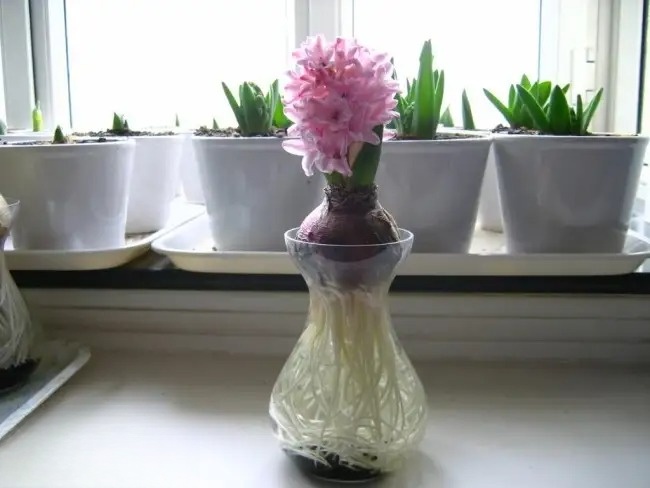
hyacinth
Hyacinthus is a plant of the lily family and a bulbous flower. It has full inflorescences of various colors and white roots.
Hydroponics points:
(1) Choose a container with a mouth that can hold the bulb. It is best to choose a gourd-shaped container that is small at the top and large at the bottom. Transparent glass is preferred. Some daily utensils such as high-foot wine glasses and wine bottles can be used. You can also choose a large-mouthed container.
(2) The water temperature should not be too high, preferably below 15°C.
(3) Place the bulb on the bottleneck. After the roots grow, lower the water level until the roots just touch the water surface. This will allow the roots to fully absorb oxygen and promote root growth. When the roots develop, cover the culture container with black cloth to allow the bulb to develop further.
(4) In winter, move the container to a sunny location to encourage the plant to grow larger and stronger flowers.
(5) You can also plant several hyacinths in the fish tank, using sand as the substrate and some shade-loving ferns as the supplement, to create a small landscape with a wild appeal that is also very unique.

Gerbera
A perennial herbaceous plant of the Asteraceae family, with large flower diameters, rich flower colors, and blooming all year round. It likes a warm, sunny, and well-ventilated environment. It is a semi-cold-resistant flower and prefers fertile and loose soil. Gerbera is a good cut flower variety. It can be grown in water for a long time, has high ornamental value, and is also a good absorber of formaldehyde.
Generally, these plants do not require special management when grown in water. Any container with a certain volume for the roots to expand can be used, and glass containers with open mouths are more conducive to maintaining water quality and root growth. When planting, avoid immersing the leaves in water to prevent rotting; place them under suitable light conditions and they will soon take root; add some water when you find that there is less water to prevent the roots from drying out; when the water becomes turbid, take out the plants, clean the container, and refill it with water. Generally, for plants grown in water, change the water every three days and apply nutrient solution once. The ratio and amount of nutrient solution depend on the size of the plant.
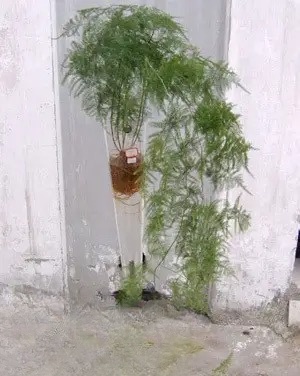
asparagus
Family: Liliaceae, Asparagus
Morphological characteristics: Asparagus fern has an elegant plant shape, slender and beautiful leaf-like branches, shaped like clouds, like bamboo but not bamboo, with a graceful and free-spirited posture, and white fleshy aquatic roots. When paired with a transparent container, it is both dignified and beautiful, and looks noble and elegant. It is a good choice for hydroponics.
Growth habits: like warm, humid and semi-humid environment, the suitable temperature is 15-25 degrees Celsius, the minimum temperature of the motive is not less than 5 degrees Celsius, likes scattered light, avoids strong direct light, avoids dry air.
Hydroponics tips:
1) Materials: Select soil-grown plants with good plant shape and vigorous growth, wash off the soil and cut off the rotten roots, then plant them in a hydroponic container and add water to one-third to one-half of the root system.
2) Maintenance: Change the water every 2-3 days at the beginning, remove the rotten roots in time, and after two weeks, the root system has basically adapted to the environment and has grown aquatic roots. After that, change the water every 5-6 days. When the plant shows strong growth potential, use nutrient solution for cultivation. The nutrient solution should be shallow rather than deep. Replenish it every 10 days in summer. When the sediment of the nutrient industry increases, renew the nutrient solution. Generally, it is renewed every 1-2 months. Avoid direct sunlight in summer, and place the plant in a warm place with strong light.
Keep the room temperature above 5 degrees Celsius, and spray water on the leaves when the air is dry to maintain high air humidity and clean branches and leaves.
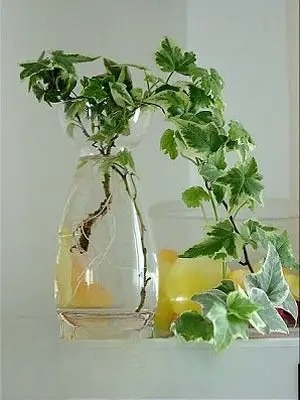
Ivy Alias: Ivy
Family: Araliaceae. Hedera
Because of its dense branches and leaves, it is the most ideal material for vertical greening of indoor and outdoor walls. It is also an excellent ground cover plant. It is suitable for climbing buildings, walls, steep slopes, rock walls and the ground under the shade of trees. The demand for potted plants is increasing.
1. Morphological characteristics and varieties
Evergreen climbing vine, with thin and soft branches and aerial roots. The vines grow spirally and can climb on other objects. Leaves are alternate, leathery, dark green, with long petioles. The leaves on the nutrient branches are triangular-ovate, entire or 3-lobed, and the leaves on the flower branches are ovate to rhombus-shaped. Racemose inflorescence, spherical flowers, light yellow. Drupes are spherical and black.
Commonly cultivated species in the same genus include Chinese ivy (H. nepalensis var. sinensis), Japanese ivy (CV. conglomerata), colorful ivy (CV. discolor), golden heart ivy (CV. goldheart), silver edge ivy (CV. siluerquetn), etc.
2. Ecological habits
Ivy is a typical shade-bearing vine plant. It can also grow in a full-light environment and grows well in warm and humid climates. It is not cold-resistant. It is not strict with soil, prefers moist, loose, fertile soil, and is not salt-alkali resistant.
(III) Reproduction methods
The nodes of ivy can naturally take root in humid air, and will naturally enter the soil after touching the ground, so it is mostly propagated by cuttings, using nutrient branches as cuttings. After cutting, it needs to be shaded in time, the air humidity should be high, and the bed soil should not be too wet. It will take about 20 days to take root.
(IV) Cultivation techniques
Ivy cultivation and management are simple and extensive, but it needs to be planted in moist soil and well-ventilated places. Transplantation can be carried out in early autumn or late spring, and it needs to be pruned after planting to promote branching. In the south, it is often planted in the shade of gardens, allowing it to naturally creep on the ground or on rockery. In the north, it is mostly potted. Potted plants can be tied with various brackets and pulled to shape. In summer, they are maintained under the shade shed and watered less, otherwise stem rot is likely to occur. If this disease occurs, the diseased plants should be separated from the healthy ones, and carbendazim and methyl tobuzin should be sprayed alternately. In winter, they should be placed in a greenhouse for wintering. The indoor air humidity should be maintained and not too dry, but the pot soil should not be too wet. Ivy can be grown hydroponically as a whole plant or by cuttings. It is best to do this in spring and autumn. After the roots grow in the cutting bed, the plant can be placed in a planting basket for root induction. Once cultivated, the ivy is very easy to maintain and is clean and hygienic. It is a good choice for home viewing. The cultivated plant can be treated with the general nutrient solution on the market or the nutrient solution for foliage plants. The concentration of the nutrient solution is generally 1/4 of the original formula.
(IV) Other effects
Ivy is not only a good greening plant, but the whole plant can also be used as medicine, which has the effects of dispelling wind, promoting dampness, promoting blood circulation and reducing swelling. It is mainly used to treat rheumatic joint pain, back pain and trauma. Mashing it to extract juice or adding water to boil and wash the affected area can treat sores, swelling, measles and eczema.
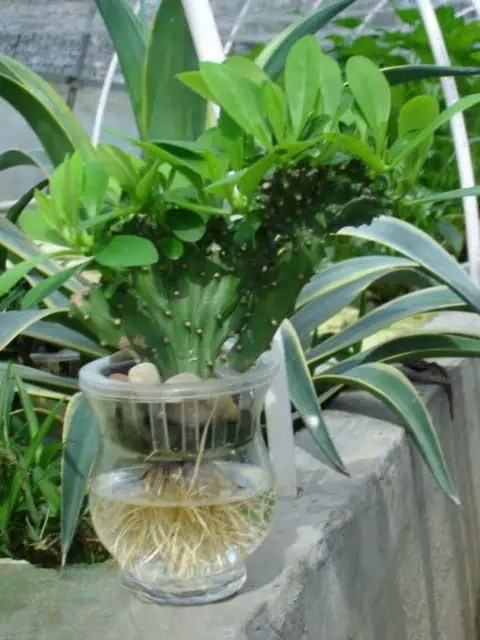
Kirin
The Euphorbia pulex is usually propagated by cuttings. From April to early September, healthy branches are cut for cuttings. White latex will flow out of the wound of the newly cut stem segment. You can dip it in plant ash or charcoal powder to prevent the flow of latex, and then leave it in a dry and cool place for 3 to 4 days. Cuttings are done after the cut shrinks. Euphorbia pulex has no close relationship with aquatic plants. When hydroponically cultivated, the principle of pollution-free cultivation must be strictly followed, and new nutrient solution must be replaced regularly to increase dissolved oxygen. The temperature in winter should not be too low, otherwise the leaves will fall. The concentration of the nutrient solution should not be too high, and it should not be overly shaded, otherwise it will cause reversion, and Euphorbia pulex will grow the columnar fleshy stems of the original Euphorbia pulex, affecting the ornamental effect; in severe cases, it will cause root rot and death. The white floating juice of Euphorbiaceae plants is poisonous. Especially it should not enter the eyes, and be careful not to let children accidentally enter the mouth or eyes.
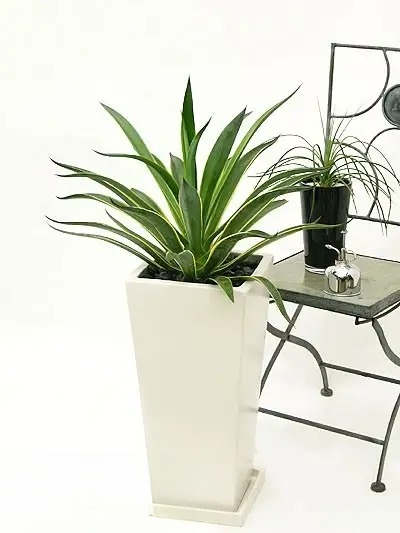
Agave
Common varieties of agave include: gold-edged agave, golden-heart agave, silver-edged agave, green-edged agave and narrow-leaved agave.
It is strong, likes sunshine, and cannot tolerate shade. It is slightly cold-resistant and can be cultivated in the open field at temperatures above 5°C. The leaves of adult agaves are only slightly frozen at a low temperature of -5°C. The aboveground parts are frozen and rotted at -13°C, but the underground stems do not die. They can sprout and grow leaves the following year and grow normally. It is drought-resistant. It likes well-drained, fertile and moist sandy soil. It usually takes decades for it to bloom in its place of origin, and the mother plant dies after flowering. It does not bloom in Nanjing. It can only bear fruit through cross-pollination.
Agave can be grown hydroponically all year round in a heated environment. When growing hydroponically, all its roots need to be removed, disinfected with disinfectant, and then soaked in rooting liquid for a certain period of time. During the hydroponics period, attention should be paid to the cabbage loopers that eat its leaves and hearts, thus losing its commercial and ornamental value. If insects are found, they can be captured manually or killed with pesticides.
For hydroponic root viewing, always take it to a sunny place. Do not place it in a dark place for a long time, otherwise the leaves will turn white and become thin, thus losing their ornamental value. Pay attention to heat preservation in winter. Place it in a sunny place near the window during the day. At night, the glass bottle needs to be placed in a plastic or cardboard box in a room without heating. If the leaves turn yellow or droop down and look listless, it may be frostbite. At this time, you need to take some heat preservation measures. Then place it away from doors and windows. Remember not to place it in the north. When changing water in winter, you can use warm water of 12 to 18 degrees. Agave has strong resistance and can safely survive the winter as long as you pay attention to management.

Money Tree
The money tree has a graceful posture, majestic crown and emerald green leaves. It looks elegant and attractive when placed in the family living room.
The money tree is a perennial evergreen shrub native to the Malay Peninsula and the South Pacific Islands. In recent years, it has been widely cultivated and bred in urban and rural households. For home cultivation, the following four points should be paid attention to based on its habit of liking high temperature and humidity and being intolerant to frost, cold and dryness:
First, pay attention to the sunlight. The fortune tree likes high temperature, humidity and sunlight, and cannot be shaded for a long time. Therefore, it should be placed in a sunny place indoors during maintenance and management. When placed, the leaves must face the sunlight. Otherwise, the entire branches and leaves will be twisted due to the leaves tending to the light. In addition, spray water on the leaves once every 3 to 5 days with a watering can, which is conducive to photosynthesis and makes the branches and leaves more beautiful.

Caiyun Pavilion
Caiyun Pavilion's hydroponic method
Euphorbia genus, Euphorbia genus, also known as Triangle Tyrant Whip. Native to South Africa.
feature
Caiyunge is a perennial succulent plant. The stem is upright, 3-4 ribs, dark green, with beautiful irregular gray-green spots in the center of the stem. There are tooth-like protrusions on the edges, and obovate leaves grow on the protrusions. There are many branches, all vertically upward, forming a unique plant shape. The whole plant contains repeated latex. Caiyunge has a peculiar shape and is rich in exotic style. It is a good choice for table greening decoration.
Habits
Caiyun Pavilion likes semi-shade, but requires sufficient scattered light. It can withstand low temperatures of 5 degrees. Caiyun Pavilion likes dryness and avoids long-term moisture, but is very suitable for hydroponic conditions.
Reproduction
Caiyun Pavilion is usually propagated by cuttings. From May to September, take a 10 cm branch of the mother plant as a cutting for cuttings. Cuttings should not be used for cuttings immediately, as this will cause the cut to rot and lead to failure. The cut of Caiyun Pavilion will ooze milky juice. When cutting, dip it in plant ash or carbon powder and dry it in a cool place for several days. Cuttings can be used after the cut is fully dried, which will make it easy to root.
Key points for water culture
1: If scale insects occur, in addition to moving them to a ventilated and well-lit place, you can brush them off with a toothbrush and then spray 250% liquid laundry detergent to kill them.
2: The white latex in the stem of the radish is poisonous. Be especially careful not to get it into your eyes.
How to obtain hydroponic materials
Cuttings and root washing. The cut branches should be dried in a cool and ventilated place for several days, and then inserted into water after the cut is dry, otherwise it will cause rot. New roots will grow after one month.

Cyclamen
Cyclamen hydroponic method
Choose cyclamen and containers Choose cyclamen plants that are 1 to 3 years old, free of pests and diseases, growing vigorously, and about to bloom. It is best to use soilless culture media such as perlite, vermiculite, sawdust, etc. to cultivate them. After changing the environment, the roots will not be damaged, the seedlings will not slow down, and they will adapt quickly. Water-growing containers are simple and economical. They can be used to recycle waste in life. Any container that can hold water, such as fish tanks, tea cups, beverage boxes, wine bottles, and vases, can be used; transparent containers are best, and the roots, stems, leaves, flowers, and fruits can all be fully appreciated. No matter what container is used, its size, height, color, etc. must be coordinated with the cyclamen plant, so that the water-grown cyclamen can show its exquisite, crystal-clear and elegant charm.
Cyclamen flowering period is generally from October to June of the following year, so the water-raising period is generally from September to April of the following year. Remove the selected cyclamen plants from the pots and wash the substrate to which the roots adhere with 20°C warm water, being careful not to damage the roots. Then place them directly in a container prepared in advance, with the water depth flush with the root zone, and the maximum depth should not exceed 1/3 of the bulb to prevent the bulb from rotting. Finally, place them in a suitable location indoors, add water and nutrient solution regularly. After two to three months of water-raising, when the flowers fade, take the plants out and plant them in the cultivation substrate to spend the summer.
Water quality and water temperature The best water for growing cyclamen in water is spring water or magnetized water. The water is clean, not turbid, and does not precipitate. It also contains a variety of trace elements necessary for plants. There is no need to change the water during the entire water-growing period. Tap water contains chlorine, which is not good for the growth of flowers, and is prone to turbidity and precipitation. The water needs to be changed every few days and should be avoided as much as possible. The water temperature should be close to the indoor temperature at the time, generally 10℃ to 20℃.
;Light and indoor temperature Cyclamen prefers a sunny environment. The water-grown container should be placed on a sunny table or windowsill indoors, not directly on the radiator. The most suitable indoor temperature is 15℃ to 20℃, the highest should not exceed 25℃, and the lowest should not be lower than 10℃. Add nutrient solution Cyclamen grown in water should also be supplemented with nutrients regularly during the flowering period. Generally, 50 ml of 1:100 nutrient solution for flowering plants is added to each plant every 10 days. Mountain spring water should also be used to prepare the nutrient solution. If you find yellow leaves, small leaves, small flowers, etc., you can add more nutrient solution as appropriate after excluding root rot.

Silvergrass
Family name: Poaceae
Latin name: Arrhenatherumelatius
Characteristics: Perennial herb
Plant height: 50-100 cm
Flowering period: Summer (June-August)
Cold resistance: cold resistant (above -5℃)
Negative tolerance: positive
Morphological characteristics: underground stems are white and bead-shaped; aboveground stems are clustered and smooth. Leaves are clustered, linear-lanceolate, 30 cm long, about 1 cm wide, with yellow-white edges. Panicles have long stalks, about 50 cm long, and are branched; spikelets have two flowers, the upper flowers are bisexual or female, and the lower flowers are male; flowering period is June-July. Native to Europe.
Habits: Extremely strong, cold-resistant and drought-resistant, and not picky about soil. In midsummer, the above-ground parts often wither and go dormant, and sprout again in early September.
Reproduction and cultivation: Usually, division is carried out every 2-3 years, in spring from March to April or in September when new leaves are first sprouted after dormancy. The old plants are dug up and separated. Each plant should have 2-3 new buds and bead-shaped underground stems. Old plants should be pruned every year to prevent the leaves from growing too long. When the underground stems are exposed, soil should be added in time to make the plants vigorous and beautiful. If too much fertilizer is applied or there is a lack of fertilizer during cultivation, the white spots on the leaves will disappear and the leaves will turn green, affecting the ornamental effect.